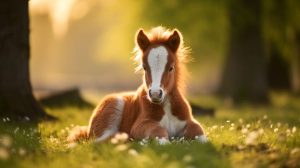Effect of Day Length on Growth
From Equine Science Update, posted by Mark Andrews:
Can the growth and maturation of yearling Thoroughbreds be accelerated by artificially extending the day length? A Japanese study has been exploring this possibility.
Hokkaido, the mostly northerly of Japan’s main islands, is the primary breeding ground for over 97% of Thoroughbreds in the country. Hokkaido experiences cool summers and cold winters, with shorter days during the winter season.
Mutsuki Ishimaru and colleagues conducted a study to examine the impact of artificially extending daylight on changes in body composition in young Thoroughbreds raised and trained in Hidaka, Hokkaido, Japan.
The study involved 73 horses aged 21-24 months.
The treatment group, comprising 41 horses (22 colts and 19 fillies), underwent extended photoperiod (EP) treatment from December 20 to April 15. This was achieved by placing a 100-watt white bulb in each horse box, providing 14.5 hours of light and 9.5 hours of darkness.
A control group of 32 horses (16 colts and 16 fillies) remained under natural light conditions with no additional lighting. All horses had 1-2 hours of pasture time daily and followed a standardised training program.
The research team assessed body weight (BW), rump fat thickness (RFT), fat-free mass (FFM), and percentage of fat (%F) as indicators of body composition.
In the control group, there was a moderate increase in BW and FFM, but no significant difference in BW and FFM between December and later months. In contrast, the EP group exhibited continuous growth until April, with significantly higher BW and FFM in February, March, and April compared to December.
The researchers suggested that the hypothalamic-pituitary-gonadal axis was activated earlier in the EP group, leading to elevated circulating IGF-I or gonadal hormones.
They concluded that young Thoroughbreds under extended photoperiod conditions in Hokkaido may tolerate more high-intensity training than those under natural light conditions during the winter season. Additionally, there is potential for these horses to perform at an early stage in 2-year-old racing.
For more details, see:
Effects of an extended photoperiod on body composition of young Thoroughbreds in training.
Mutsuki Ishimaru, Atsushi Okano, Akira Matsui, Harutaka Murase, Kenji Korosue, Kentaro Akiyama, Kazuyoshi Taya.
Journal of Veterinary Medical Science, (2024), Vol 86, pp 58-65,











